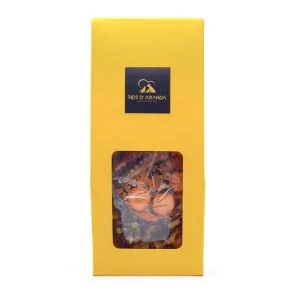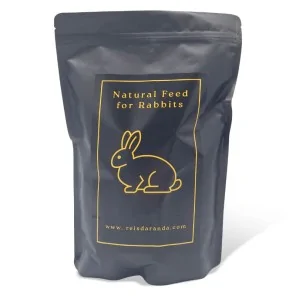Its name says it all: the Vienna blue rabbit comes from Austria. Not only is it beautiful with its shiny blue-grey...
THE DWARF LOP
INTRODUCTION
The Dwarf Belier (Dwarf Lop) is the largest and heaviest of all dwarf rabbit breeds with an adult weight of 1.930kg-2.381kg and its name is often used to mislead the public into selling mongrels that end up weighing 5 or 6 kilos, have strange physical characteristics or simply to name any rabbit that has one or both ears drooping.
As always, we remind you that a rabbit is never a breed if it is not identified by its origin (microchip, ring or tattoo) and has a pedigree backed by a national or international association. This is the only thing which proves that the animal which we have in our hands is of that particular breed.
THE STANDARD OF THE DWARF BELIER
We will now talk about the standard of the Dwarf Belier and for this we will take the standard provided by the BRC (British Rabbit Council) of the United Kingdom.
1.- TYPE: Short body with well rounded back. Deep chest and broad shoulders, giving a well muscled cobby appearance. Legs short and strong.
2.-HEAD: Well developed, particularly in males. Good distance between eyes. Full cheeks and broad muzzle are desirable features. The basal ridge of the ears should appear prominently on the top of the skull.
3.-EARS: Should be broad, well furred and rounded at the ends. They should fall close to the cheeks, so that when the face is viewed from the front the upper line should be horseshoe-shaped. The inside of the ears should not be visible from any angle. No measurements are described for the ears.
4.-EYES: Round and bright.
5.-HAIR: Should be dense and of good length. It should grow in a downward direction, with abundance of guard hairs.
6.-FAULTS: Narrow shoulders, long body, narrow head. Ears drooping back or not drooping at all. Hair too short or fly-back. Excessive white hairs on coloured dogs, light tails on sooty fawns. White tails on sooty fawns are a serious fault.
7.- DISQUALIFICATIONS: Weight above the maximum; the adult weight should be a maximum of 2.381 kg and a minimum of 1.93 kg. Poor physical condition. Dental malocclusion. Watery, opaque or strange coloured eyes. Runny nose. Tufts of white hairs or white shades in coloured dogs.
8.- OWN COLOURS:
A) SELF
White (BEW or REW)
Black
Blue
Chocolate
Lilac
(B) AGOUTI PATTERN
Agouti
Chinchilla
Opal
Orange
Lynx
Cinnamon
C) SHADED - SHADED
Sable (Siamese) Medium
Sable (Siamese) Light
Sable (Siamese) Dark
Smoke
Sealpoint
Sooty Fawn
D) PATTERN TAN
Black Fox
Blue Fox
Chocolate Fox
Lilac Fox
Sable Marten Dark
Light Sable Marten
(E) OTHER COLOURS
Fawn
Steel
Butterfly
Any colour or pattern forming part of recognised breed colours or patterns, with the exception of the ‘broken’ pattern.
DIFFERENCES BETWEEN THE MINI LOP AND THE DWARF BELIER
The only physical difference between the Mini Lop and the Dwarf Lop is the weight, the Mini Lop having an adult weight of 1,500-1,600kg and the Dwarf Lop 1,900-2,381kg. British associations and Spanish fancy rabbit clubs such as ASNAC or AECCE recognise both varieties as distinct breeds, contrary to the policy of the European federation or the Spanish federation FESACOCUR which consider (and judge) both as the same breed.
In terms of character, the Mini Lop is a more restless and dynamic breed than the Dwaf Lop.
THE PERSONALITY OF THE DWARF BELIER
The Dwarf Belier is noted for being an extremely peaceful and comfortable animal to live with, aggression is totally unusual and, if it occurs, the most frequent probable cause is hormonal fluctuations (which can be solved by neutering). He gets on well with children and other animals, making him a great choice for first-time families wanting a floppy-eared, short-haired bunny that is hardy and somewhat less delicate than the Mini Lop.
HEALTH OF THE DWARF BELIER
The Dwarf Belier is a hardy and healthy breed that rarely suffers from hearing problems (there is no evidence of this in the few Spanish certified breeds, all of which are ethically bred, but in the foreign kennels questioned for this article). Unlike other dwarf breeds, the Dwarf Belier does not have the gene for dwarfism, so its litters are usually complete (without peanuts) and the approximate number of offspring is usually 5-6.
As with any other rabbit, check-ups at the vet should be every 6 months and, in the case of rabbits over 4 years of age, every 3 months.
CONCLUSION
The Dwarf Belier is a friendly, strong and pleasant breed, ideal for families who are looking for an animal with a great personality and are not only interested in weight or size. It is easy to care for as it has a short coat and can become a great friend for the youngest members of the family (always with adult supervision).
Leave a comment
Log in to post comments















